Bullmastiff: characteristics of the breed of dogs and growing
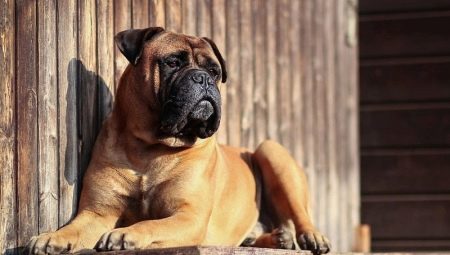
In appearance, the bullmastiff looks very serious, formidable and aggressive. Many people are afraid to approach these animals. In fact, in the family, such pets behave quite differently - they are incredibly loyal and friendly four-legged companions, distinguished by a calm, balanced character.
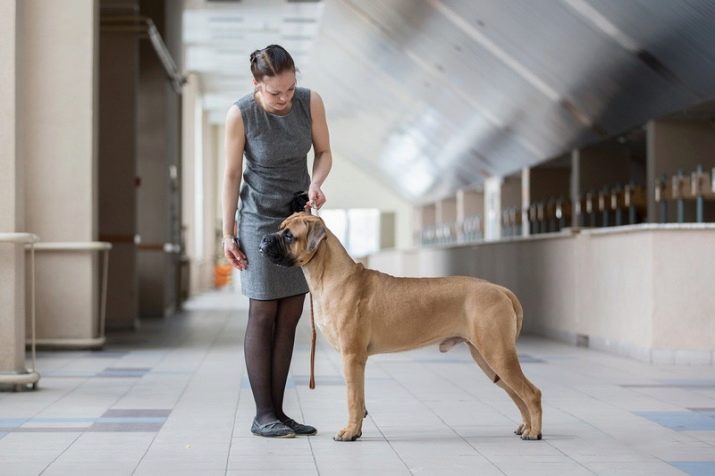
Origin story
The Bullmastiff is a descendant of the ancient English Mastiff breed. They behave quite modestly and restrained. The first mentions of them date back to the 18th century. However, many sources indicate that the birth of these dogs fell on a later period - the 19th century. In those days, the gamekeepers who kept the game and were engaged in its protection faced serious problems due to the highly developed poaching activity.
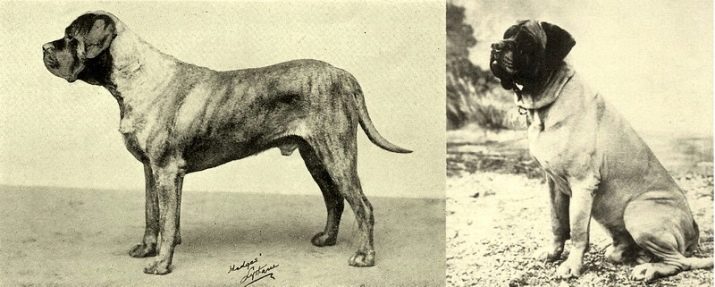
Because of this, the huntsman could not do without a powerful and fearless assistant who could attack the poachers' dogs, but to do this solely at the command of the owner.
Bulldogs had dimensions that were not suitable for such purposes, and simple mastiffs lacked agility and speed. Because of this, people began to breed a new type of dog, in which the positive qualities of both these breeds would be combined. Attempts have been made to cross them. The result is a perfectly suitable dog, which in ancient times was called "the night dog that guards the game." The dark color of these individuals was then considered optimal, since it was absolutely invisible at nightfall. Due to the improved characteristics, the breed quickly gained great popularity and wide distribution. These pets were often used on landowners' households. There they served as reliable and vigilant guards.
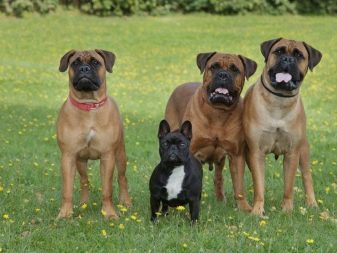
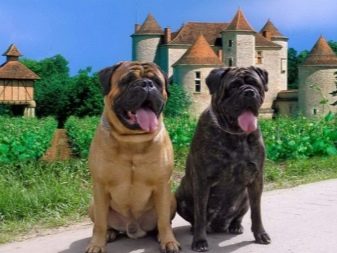
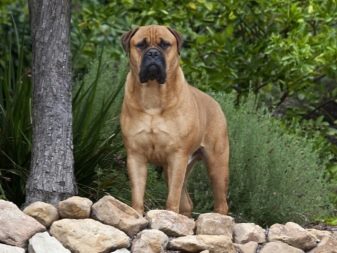
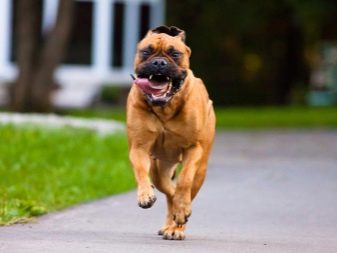
Many people have literally fallen in love with dogs with a light coat and a contrasting dark "mask" on the face. However, the breeders felt that crossing the two breeds was not enough. As a result, they set out to teach a completely new, purebred breed, which would be characterized by bulldog qualities (60%) and characteristic features of mastiffs (40%). As a result of the breeding work carried out, new dogs were born - bullmastiffs. The English club recognized these interesting members of the new breed in 1924. The American Kennel Club officially accepted the bullmastiff only in 1933.
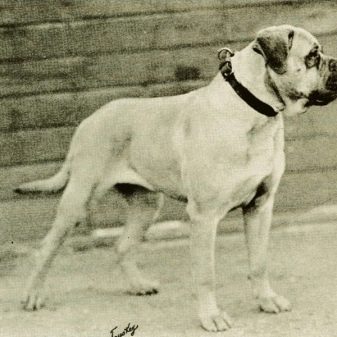
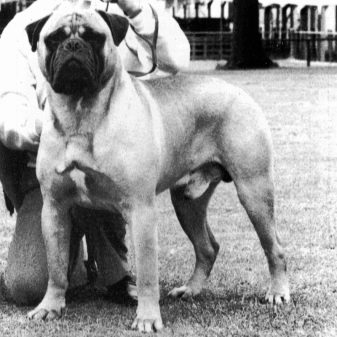
Description of the breed
Bullmastiff is a wonderful protector, friend and guard. Despite the rather harsh and brutal appearance, these pets are very popular and delight many breeders, since they have many positive character traits. If you are planning to buy a puppy of this breed, then you should familiarize yourself with its standards.
- The weight of an adult bullmastiff male in most cases ranges from 50 to 60 kg. Bitches are slightly smaller and more compact - their weight reaches 45–54 kg.
- It should be borne in mind that bullmastiffs are quite large dogs. At the withers, the height of an adult thoroughbred male is usually 63–69 cm, and that of a female is 61–66 cm.
- Regardless of what color the main fur coat on the animal's body has, a black mask will take place on its muzzle. The eyes have an expressive edging, the ears are also distinguished by a dark color. In accordance with the standard, the presence of a large snow-white spot in the chest area is permissible. Most often bullmastiffs are red, fawn or bright brindle. Slightly less often you can find marble specimens. The blue color of the coat is genetically impossible. If the puppy has this color, then it will mean that he is a mestizo.
- One of the most significant drawbacks of bullmastiffs is the length of life. The health of this breed is not the best, immunity cannot be called quite strong, which ultimately leads to a short life span. On average, a bullmastiff lives for 7–8 years.
- Most dogs of this breed can boast of a well-developed intellect and good mental abilities. They quite quickly understand and master new commands, perfectly understand the intonations of the owners and feel their mood.
- The security and sentry potential of the bullmastiff is not very well developed. These dogs are excellent defenders of their owners from various threats, but they attack only in exceptional cases. Usually they just stand between the owner and the enemy.
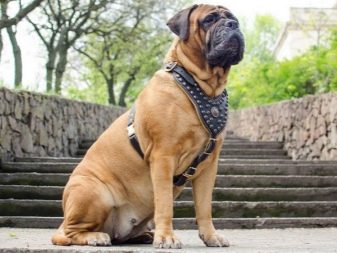

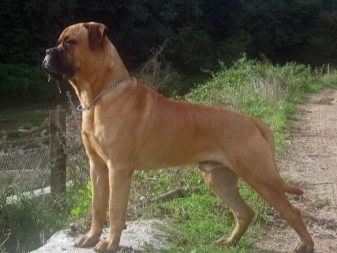
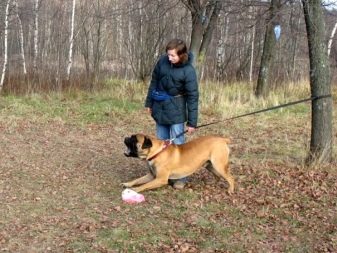
The instinct to defend its territory is practically undeveloped.
These dogs have the following physical characteristics in accordance with the standard:
- the bullmastiff's head is square, the skull is very wide, and the muzzle itself is rather short and pronounced folds of skin;
- the eyes are set wide, the iris usually has a characteristic nutty or dark shade;
- the nose of the bullmastiff is quite wide by nature;
- the ears are V-shaped, small in size, set high, their color is dark;
- a characteristic feature of a bullmastiff is large and strong teeth, they have a straight correct bite, if the latter is not too pronounced, then this feature is not considered a defect;
- the back of these dogs is short and has a straight structure;
- the limbs of purebred individuals are strong and powerful and with well-developed muscles; the toes have a rounded structure, the pads are very dense, and the claws are painted in a dark color;
- the bullmastiff's tail tapers from base to tip;
- The coat is very short and has a dense structure.
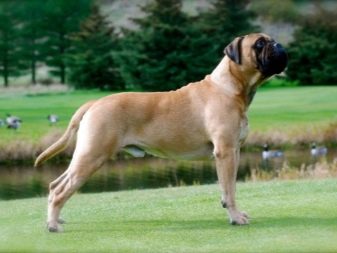
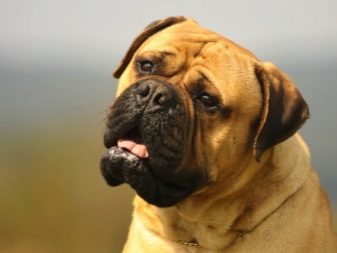
Defects of representatives of this breed include the following characteristics:
- long and soft to the touch wool;
- folds present in the area of the ears;
- pointed nose;
- snub nose;
- light shade of the eyes.
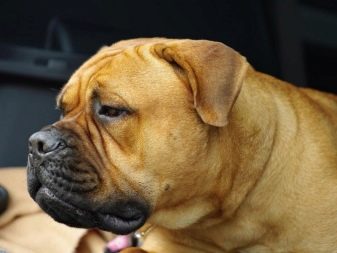
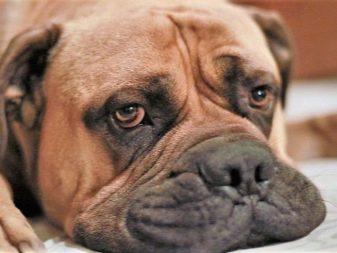
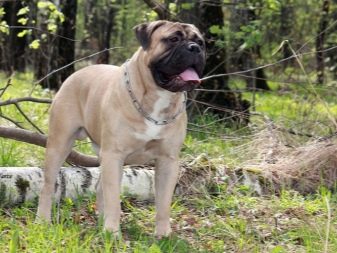

Character and behavior
It is not enough to know only the external characteristics of such dogs in order to clearly determine the appropriateness of their purchase. It is much more important to be aware of the character and behavior of the bullmastiff. The appearance of the representatives of this breed can cause awe and even fear in a person. However, most of the owners of these pets speak of them as big, friendly, good-natured people. The Bullmastiff is affectionate and loyal by nature. This breed catches up fear and horror on strangers solely by its appearance.
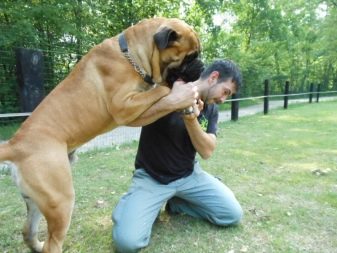
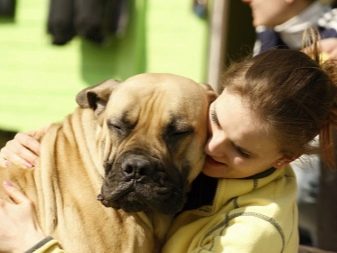
When this breed was just formed, the dogs were reputed to be truly ferocious and tough animals with not the most simple disposition. However, further breeding work made it possible to reduce these characteristics to the maximum, which frighten off many people. Currently, the bullmastiff is actively used to protect bars, banks, offices, as well as private property.

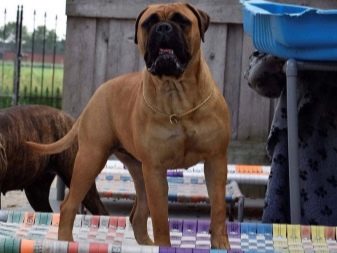
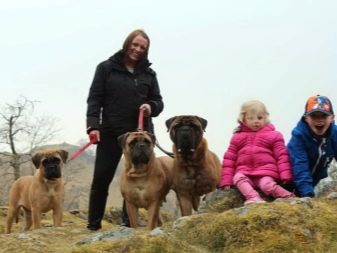
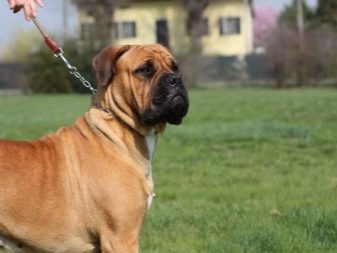
True, in most situations, representatives of this breed are turned on in order to acquire another family member and a kind, understanding companion.
There are a lot of different reviews about these dogs. The lion's share of them testifies that the bullmastiff is doing an excellent job with the obligation to be a loyal and benevolent member of the family. Since these pets by nature have a calm disposition and truly angelic patience, they can get along without problems with more than one person. Often these kind healthy people are born in families with children.


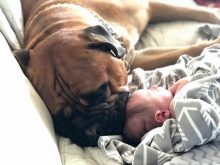
In such conditions, the bullmastiff shows himself exclusively on the good side and does not pose a danger to the younger household members.
The dogs of this world-famous breed always adapt to the lifestyle and lifestyle of their owners. They can easily accompany their person during light morning jogging, cycling and other similar activities. If the owner is not so active and energetic, then the bullmastiff will feel "at ease" here too. If you adore long sitting with a book or watching TV, then this dog will not mind spending time with you in this mode.
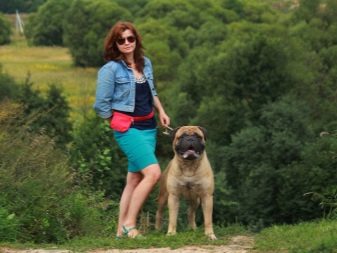
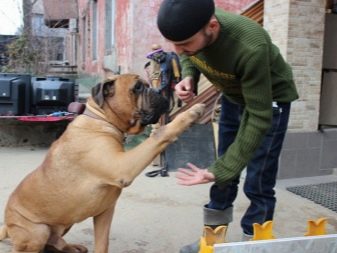
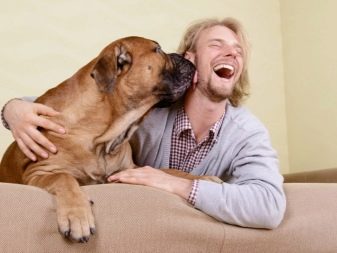

Bullmastiff gets along well with children. It should be noted that the impressive dimensions of these dogs do not bother them in this. Usually, these pets try to behave as carefully and delicately as possible when they spend time with the younger members of the family. The role of a large and gentle nanny suits them. In addition, the bullmastiff is the ideal playmate.
For the bullmastiff, children unwittingly become objects under his protection. There are times when dogs of this breed prevent the parents from punishing the guilty offspring. True, such events usually take place without the manifestation of excessive anger and aggression on the part of the bullmastiff. The dog will simply block your way in front of the guilty child.
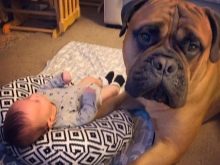
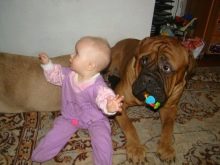
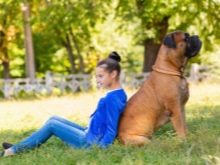
Despite the fact that the ancestors of the bullmastiff had a fighting habits and disposition, these smart big guys are not. Among the representatives of this famous breed, you can meet especially phlegmatic individuals or real sanguine people, distinguished by the most balanced character traits. The IQ of the bullmastiff is very good. They are smart and quick-witted, quickly understand and grasp everything "on the fly." Usually a bullmastiff does nothing in the heat of the moment. He will always make a preliminary assessment of the current situation.
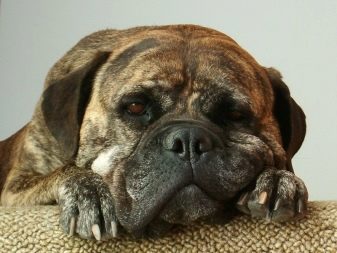

Important! If the bullmastiff behaves too harshly, cowardly or even aggressively, then such qualities will lead him to rejection.Individuals with similar behavioral features are not allowed to be breeding, therefore, such a measure also contributes to obtaining the most balanced and intelligent dogs.
Advantages and disadvantages
Purebred bullmastiffs have both positive and negative qualities. Both must be borne in mind if a person plans to acquire such a pet. This breed has the following advantages:
- Bullmastiff is an incredibly loyal and loyal dog; they love their master and his family immensely;
- the character of these pets is balanced and calm; surprises in their behavior are usually not observed, which is why bullmastiffs are often trusted by children;
- the level of intelligence of such dogs pleases their owners, the actions of the bullmastiff are deliberate and conscious;
- these dogs are easy to train; they quickly master new commands and immediately understand what the owner expects of them;
- the bullmastiff cannot be called too demanding in care; the coat of these pets does not need much attention - it is easy and simple to care for it, which pleases many breeders;
- the patience of a thoroughbred bullmastiff can only be envied; These dogs are incredibly tolerant, so they can be left without fear in the company of small children who love to play pranks.
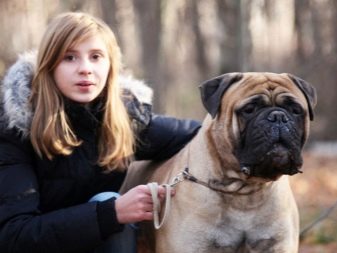
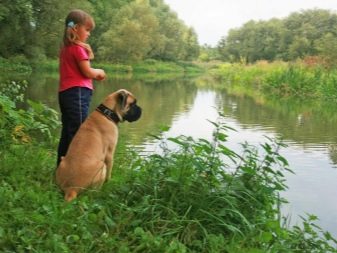
Yes, the advantages of this breed of animals are undeniable. However, there were some drawbacks, namely:
- the bullmastiff is characterized by strong salivation; if the animal is kept in a city apartment, then soon furniture and clothes will be stained there; I must say that the saliva of such dogs is not easily rubbed off;
- these pets often snore loudly in their sleep, at night the noise from them can interfere with the owners' sleep;
- bullmastiffs are rather stubborn and lazy;
- representatives of this breed tend to demonstrate their leadership;
- unfortunately, the lifespan of these animals is very short, this factor is recognized as one of the most important shortcomings of the bullmastiff;
- males of this breed are hostile towards other dogs of the same sex.
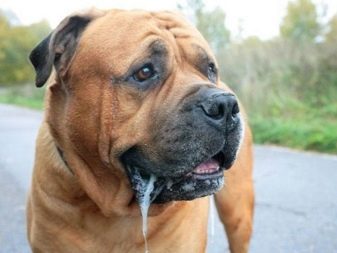

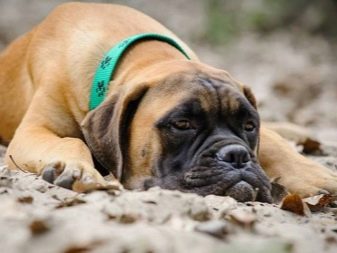

How to choose a puppy?
If you have weighed all the pros and cons of a bullmastiff and decided to make such a four-legged friend, then you should know how to choose the right puppy of this breed.
- Bullmastiff males have a more textured appearance than females. However, their character is also more dominant. In addition, dogs of this breed are more prone to allergic reactions, which can ultimately lead to dermatitis. Consider these features when choosing a puppy.
- Girls are not very expressive in appearance, but they are more willing to make contact. They are even more loyal to children and are more likely to learn. It is permissible to buy such individuals in pairs. The same cannot be said about males.
- Puppies of this breed are usually massive and well-fed. A healthy baby at the age of two months will weigh at least 9-10 kg. If the puppy is 3 months old, then its weight should be from 17 kg. If the puppy that you liked has too little body weight, then this will indicate that he has not been provided with proper care. Most likely, the baby suffers from certain diseases.
- If you buy a pet for future participation in exhibitions and various competitions, then it is better to take it at the age of 7-8 months. It was at this time that all its characteristic features become clearer and more noticeable. If you are looking for a faithful companion or a reliable guard, then there is no need to waste time. You can buy a puppy that is 1 to 3 months old. This age is considered optimal in this case.
- It should be checked whether tests have been carried out on litter breeders for various genetic diseases (in particular for dysplasia). It will be necessary to clarify how the bitch and the dog are doing with food allergic reactions. Very often little bullmastiffs inherit allergies from their parents.
- Be sure to inspect all puppies in the litter if the breeder allows it. Thus, you will be able to make a comparison of animals and, as a result, make a choice in favor of the smartest and most active baby.
- It is worth evaluating the uniformity of the litter when choosing “your” puppy. An absolutely healthy breeding bitch will not have too small or too large puppies.
- Be sure to carefully feel the tail of the selected puppy. Very often, small bullmastiffs have characteristic creases at the tip of the tail, which unscrupulous and cunning breeders skillfully hide, turning to the operational method. When a baby with such a problem becomes an adult and mature, his tail will be shorter than that of his fellows. As a result, such a nuance will not allow the animal to get to exhibitions.
- Look carefully into the jaws of the little bullmastiff. If there are more milk incisors than is allowed by the dental formula, then this does not apply to defects. It will be worse if there are fewer of them.
- A purebred little bullmastiff will have a U-like set on the forelegs. In puppies that are 2 months old, the eyes always have a dark blue or brown iris tint. This breed does not have blue eyes.
- If you are looking for a dog for an apartment, then you should take a closer look at adorable doggies with a characteristic brindle color. These individuals have almost no undercoat, so they shed to a minimum. Puppies of fawn and brown colors have an undercoat, albeit a thin one. They tolerate low temperatures much better. However, many times more wool remains from them.

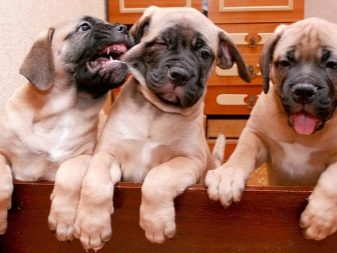
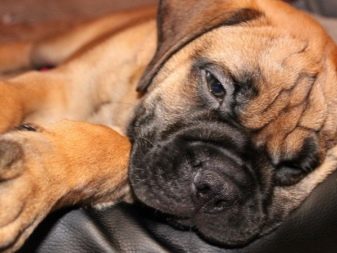
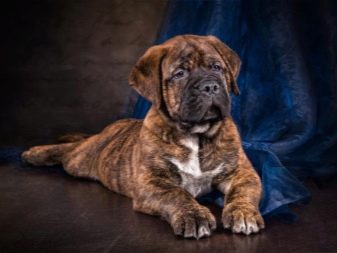
Conditions of detention
Bullmastiffs cannot boast of unsurpassed guarding qualities. These pets are more suitable for guarding all family members. If you use the bullmastiff for his main purpose, then he will perfectly cope with his duties. Good news for the owners of city apartments: in such conditions, the bullmastiff can live without any problems., despite its impressive dimensions, and in such an environment, the pet will not interfere with anyone. Dogs of this breed do not have the habit of constantly getting entangled in the feet of their owners.
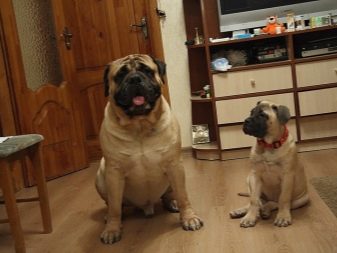
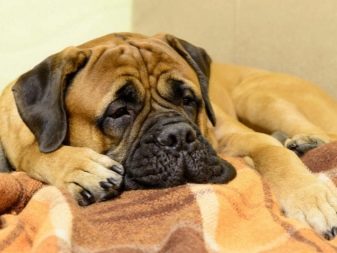
Basically bullmastiffs are phlegmatic, so they can lie on the sidelines for a long time, thinking about their own. Running around the house and poking your nose everywhere is not the bullmastiff's favorite pastime.
Do not forget that dogs of this breed have a very short undercoat, so you can only keep them outdoors if you build a high-quality insulated booth or an insulated enclosure. In other conditions, the animal will be extremely uncomfortable. One of the main advantages of a bullmastiff is that they bark extremely rarely, so they do not create any interference for neighbors. This pet as a whole does not cause serious problems if properly raised and trained in everything necessary. True, the increased salivation of these animals can interfere with the owners. All dogs of this type have such a feature, and the bullmastiff does not differ in the greatest abundance of saliva.

Important! Dogs of this breed do not require impressive physical activity or active exercise. It is enough not to forget about daily walks, during which it is better to put a muzzle on your pet.
Feeding
The classic menu of large dogs, such as bullmastiff, is made from natural food. All foods should be high in essential protein and mineral supplements. The food rate per day should be 2 kg for a dog weighing 50 kg. The diet of these dogs must contain meat. For a bullmastiff, it is recommended to choose only sinewy, but not very fatty meat, in which there is a large amount of cartilage. It is these products that are able to saturate the dog's body with a whole range of essential nutrients, including collagen.
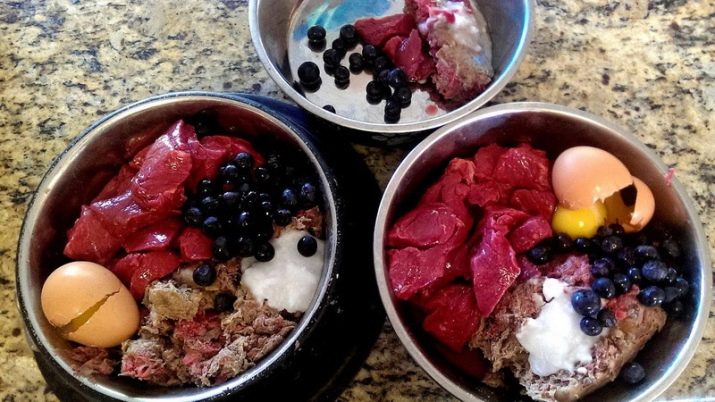
Important! In no case should bullmastiffs (like most other breeds) be given fried, baked, pickled, smoked, salty and sweet foods. Such food will seriously harm your pet's health. Exotic fruits and vegetables from tropical countries should also not be given to your pet if you do not want him to get sick later.
Let's admit the growth and development of bullmastiffs on ready-made industrial feed. It is recommended to give purebred pets only premium and super-premium feed options. Dry options often have to be made more tasty by adding wet ingredients. When choosing a ready-made food for your pet, you should pay due attention to its composition and manufacturer. Such food should not contain harmful chemicals, preservatives of unknown origin and various flavoring enhancers.

It is advisable to buy such feed, which contains natural meat in the proper amount.
Buy ready-made food for the bullmastiff from reputable manufacturers. Little-known and cheap products are unlikely to benefit the animal, but they can seriously harm. In addition, it is not recommended to feed such animals with budget economy class feeds, which are sold in any store and supermarket. Such food is especially advertised and has bright, eye-catching packaging.

Care
Dogs of the described breed need proper care.
- Although the bullmastiff's coat is very small, it will still need to be combed out twice a week. This will be enough to keep the animal beautiful and clean.
- We must not forget about bathing these dogs. Bathing procedures should be addressed as needed. During these events, the folds on the body of the animal should be washed as thoroughly as possible. After finishing bathing, the bullmastiff needs to be wiped dry. Use only specialized shampoo for washing. Simple formulations for humans will not work for this. It is permissible to use special dry shampoos for dogs.
- Examine your pet's ears weekly. It is better not to use cotton swabs to clean them. Preventive cleaning is recommended with special lotions available from many veterinary pharmacies. If you notice irritation or redness on your pet's ears, as well as an unpleasant odor, you should visit your veterinarian right away.
- Brush your pet's teeth. This should be done either with a special brush or with a nozzle on your finger. Such procedures should be resorted to at least once a week. Brushing your dog's teeth regularly can help prevent tartar and bad breath problems.
- In domestic dogs, claws should be trimmed from time to time. The fact that it is necessary to refer to this procedure should be indicated by the characteristic clatter when the animal walks around the house.
- One of the highlights of caring for a bullmastiff is taking regular walks. Physical activity should be, but not too serious. Lazy pets gain weight quickly and can become obese without training.
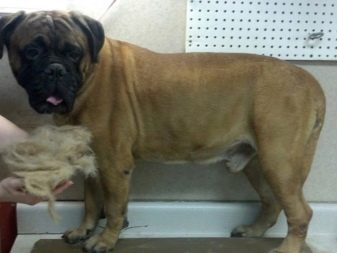
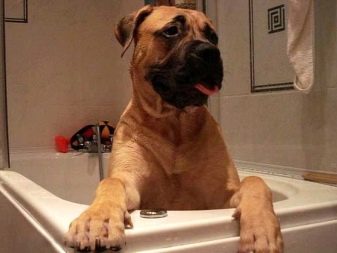
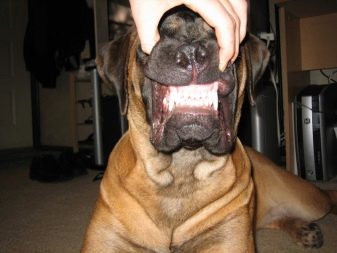
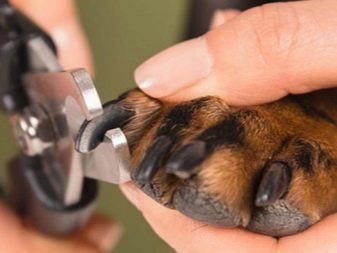
Education and training
A bullmastiff, like a dog of any other breed, needs proper education and training. Without this, the pet will be naughty and ruin the impression of itself with uncontrollable behavior. It should be borne in mind that these dogs are not suitable for weak and insecure people, since they are rather wayward and very stubborn animals. Only a true leader with patience and free time can cope with them.
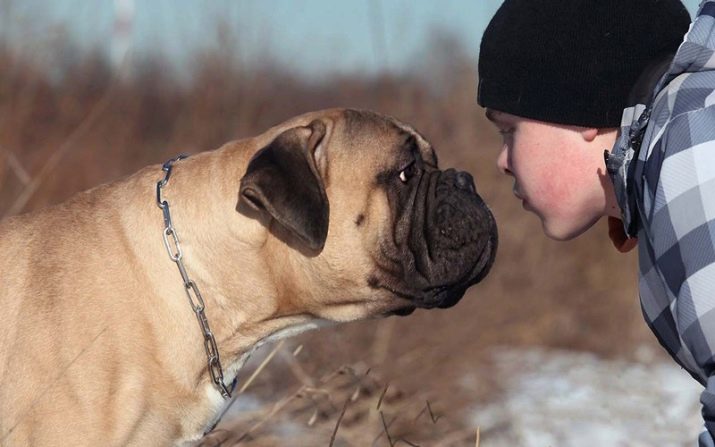
It is necessary to initially establish such a relationship with the pet so that he respects and loves his master, trusts him completely. There should be an understanding between the owner and his four-legged friend.
It is allowed to train and educate a bullmastiff only in a calm environment. But the owner must be quite demanding and persistent. Dogs of this breed often resort to various tricks and methods of manipulation to take the lead. It should be borne in mind that the bullmastiff is far from the kind of dog that will suit a beginner and inexperienced breeder. Such animals need constant attention from the owner, and the latter must have pronounced leadership qualities. The process of training and socialization for bullmastiffs takes a lifetime. These pets are somewhat similar to adolescents: they are always in search of something new, very often they ignore the rules and norms of behavior.
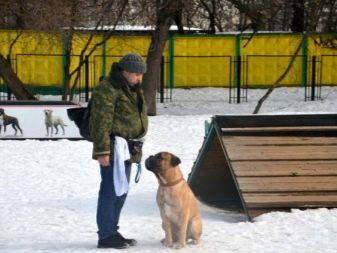
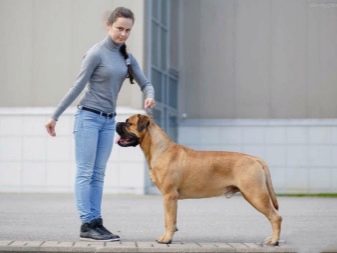
Consistency should come first in the development and training of these pets.
Helpful hints and tips
It is worth adhering to simple tips.
- When the weather is hot outside, bullmastiffs very often refuse to eat. There is no point in chasing them with a bowl of food. It is better to give your pet the right amount of low-fat kefir of the first freshness. Instead of kefir, water or fermented baked milk will do. So the animal will survive the heat more easily.
- You can only walk a bullmastiff wearing a muzzle. It is advisable to keep your pet on a leash. Despite constant control, the pet at any time can behave in a way that no one expects from him. Without proper security measures, such events can have dire consequences.
- Monitor your pet's health. At the slightest hint of a disease that has arisen, you should immediately go to the veterinarian. Don't waste time and expect your pet to recover on its own.
- The bullmastiff must be combed out as carefully as possible. For this, it is recommended to use special brushes that are sold in many pet stores.
- All food that is prohibited for consumption by the bullmastiff is best kept out of the reach of the dog. Move harmful treats away so that your pet cannot get to them.
- A bullmastiff can show serious aggression towards other animals living with him in the same territory (and not only), if he is not socialized correctly and in a timely manner.
- Despite the fact that bullmastiffs are very kind to children, it is better, of course, not to leave them alone. The dog can accidentally harm the child because of its impressive size. Parents must keep the situation under control at all times.
- The bullmastiff is prone to overheating and getting heatstroke. If the weather is hot outside, then it is better not to take your pet outside the house.
- It is necessary to take into account the fact that dogs of this breed have a characteristic low pain threshold. Very often, this feature is the reason for the difficulty of early detection of the disease in these animals.
- When raising a bullmastiff, you should not scream or resort to physical punishment. The dog will perceive such an attitude negatively. As a result, the pet will lose confidence in the owner, will not perceive him as a “leader of the pack”.
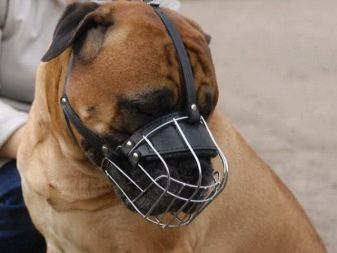
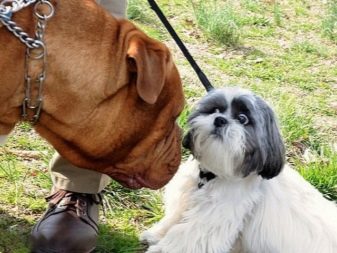
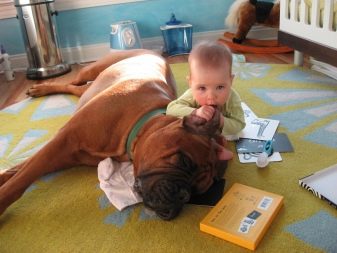

Characteristics of the bullmastiff breed in the next video.






































